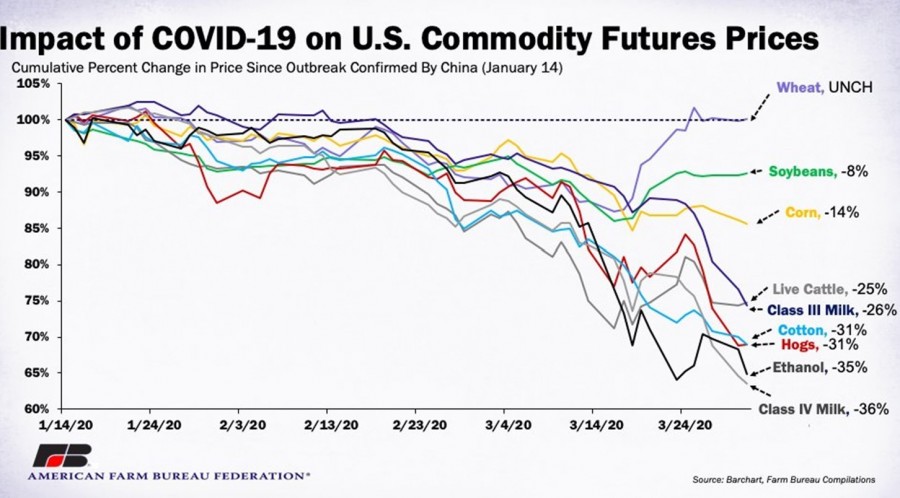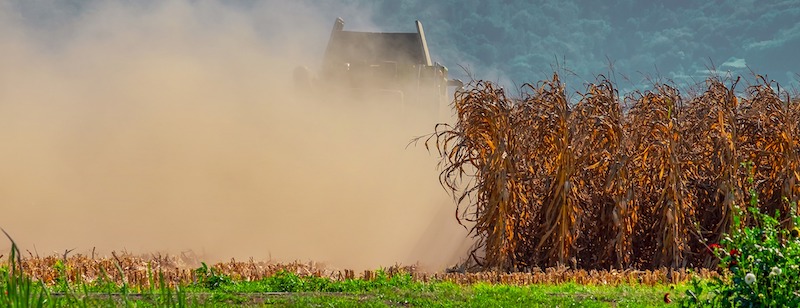It has been over a year since the pandemic hit the world and almost a year has passed with quarantine, mask, and other controversial mandates, coming and going across the country. While there have been some good signs recently, it also feels like there is no end in sight, and the uncertainty of the effects and implications of COVID-19 has been felt by all industries, including agriculture.
While the foodservice and hospitality industries are undoubtedly suffering a great deal, with many businesses shuttering their doors for good, the agriculture industry has been feeling the implications just as greatly.
At the start of the pandemic in the spring of 2020, many parts of the industry were impacted. The cattle market tanked, processing plants shut down, restaurants were closed-causing less demand for food products, dairy prices declined, and many other sectors suffered. People drove less, meaning less demand for ethanol. Farm workers were scarce as travel restrictions occurred.

Additionally, AgriLife Today reported in an article titled “Animal agriculture markets resilient almost a year into COVID-19 pandemic” that “The USDA data show that the average price paid to livestock, poultry and dairy producers at the farm level dropped by almost 20% in April. At the same time, consumer prices for meat, poultry, fish and eggs began a sharp increase in April, and by June, consumer prices were more than 10% above the March level.”
So, not only were farmers and ranchers, as well as other sectors of the agriculture industry effected, but so were consumers. From low stock on grocery store shelves to higher prices on necessary items, no one was safe from the negative effects of the pandemic.
The farm economy has been in a negative downturn for years, and the pandemic was just another in a long stream of hardships. While most people assumed that the empty shelves and increased demand for direct-to-consumer goods meant farmers and ranchers were financially secure, but that couldn’t be further from the truth.

Pandemic relief helped to a certain extent, but wasn’t a solution to the loss felt by producers who only received a portion back of the financial loss they experienced, or didn’t qualify for relief payments at all, among other reasons. Furthermore, the halt on the relief by the Biden Administration early in 2021, and the ongoing restrictions, brings further uncertainty more than a year after the pandemic began.
However, Successful Farming stated, in an article titled “Strongest Farm Outlook In Years, Say Ag Bankers” that “Higher market prices, particularly for corn, soybeans, cattle, and hogs, are forecast by the USDA to run $20 billion above 2020’s total and net farm income. A gauge of profitability would be 20% above the 10-year average.”
While time may only tell if this will be true, one thing is for certain. Consumer demand rose, and buying local, or directly from producers have created new business opportunities for ranchers during a questionable time.







